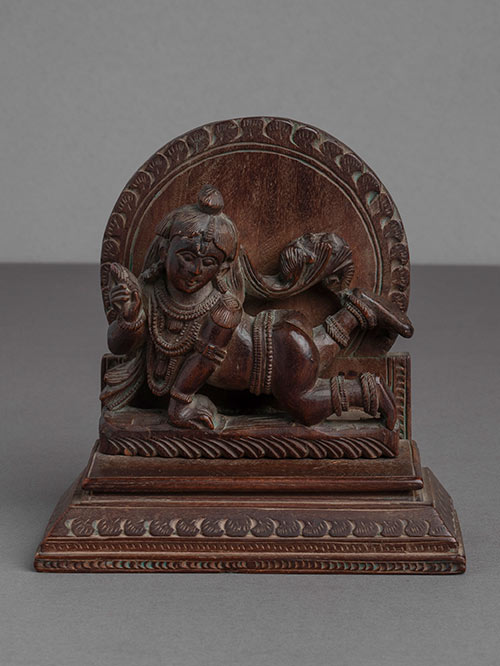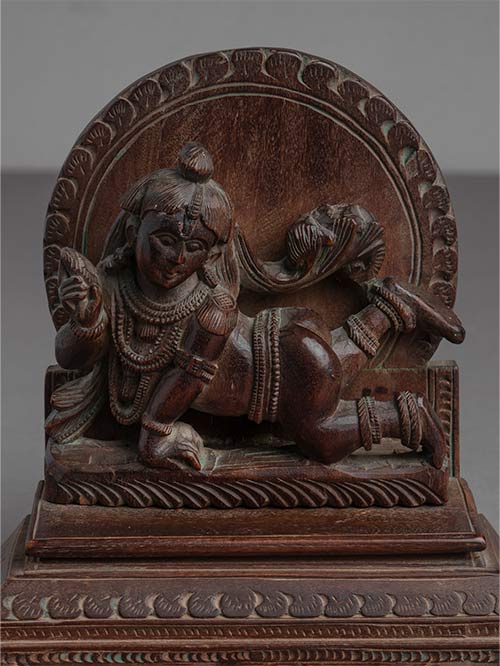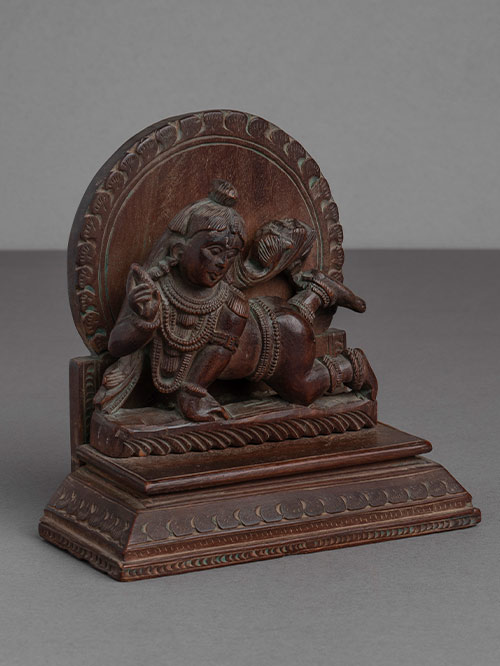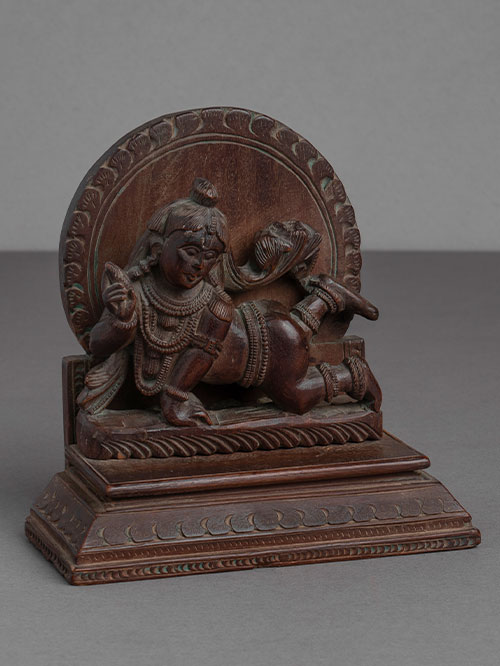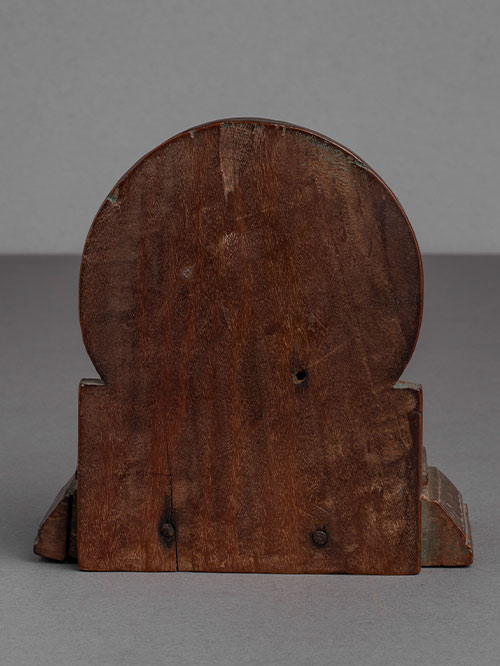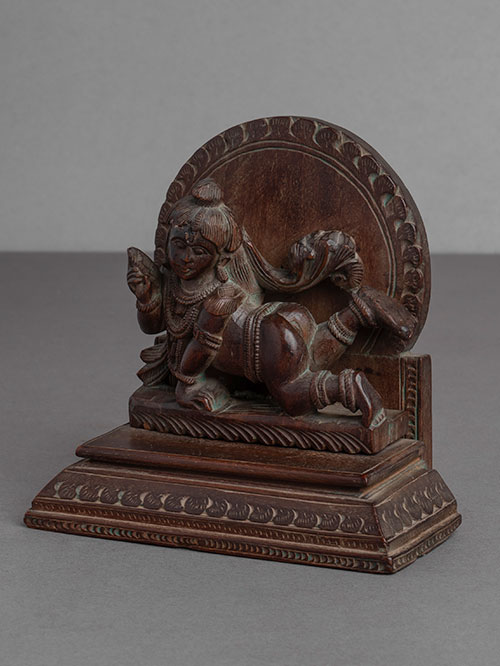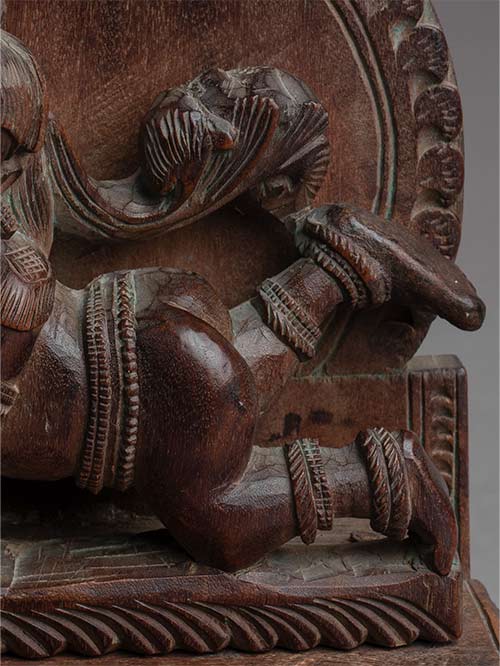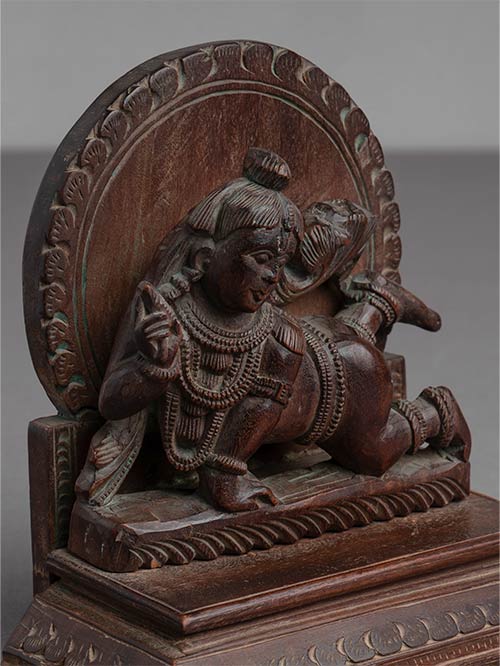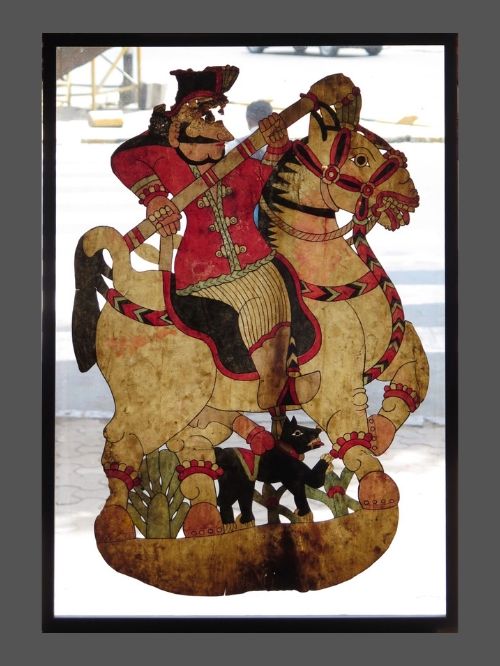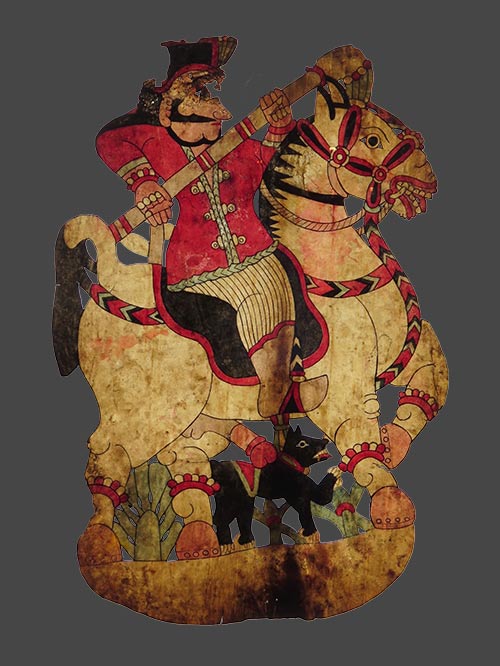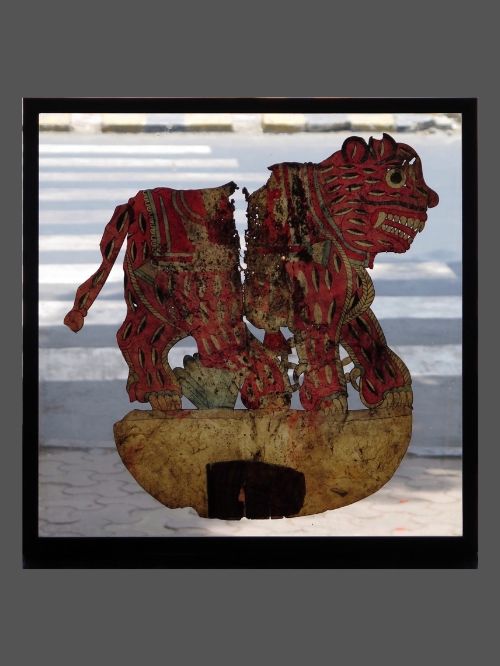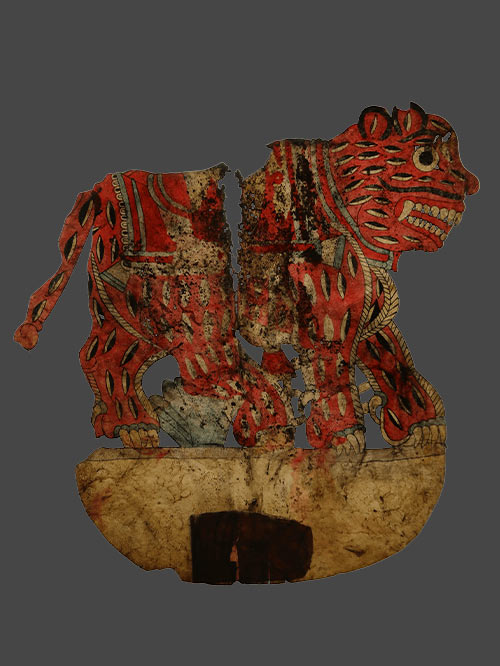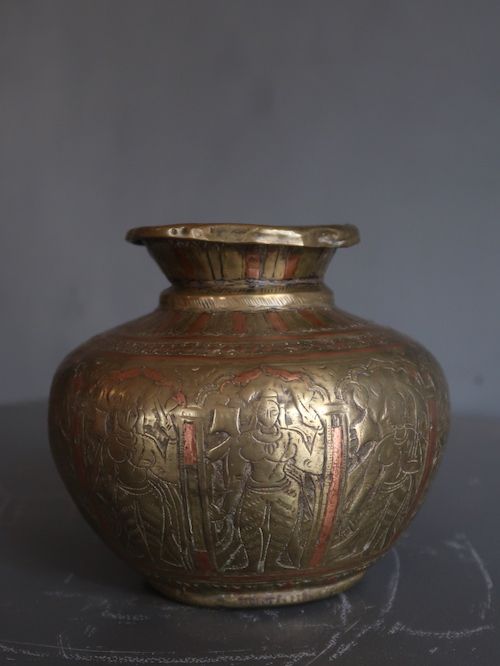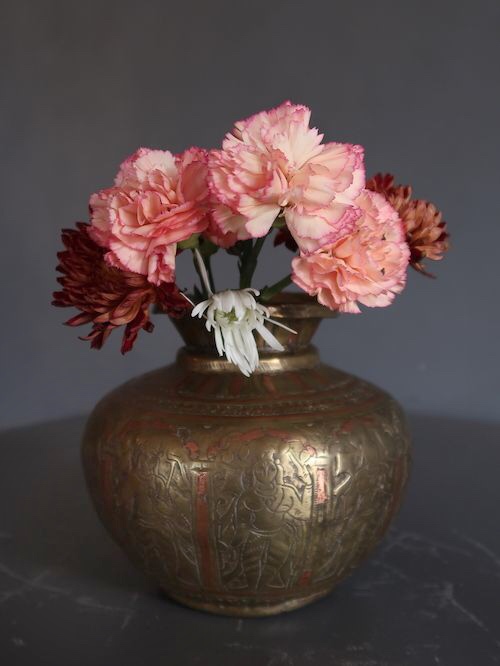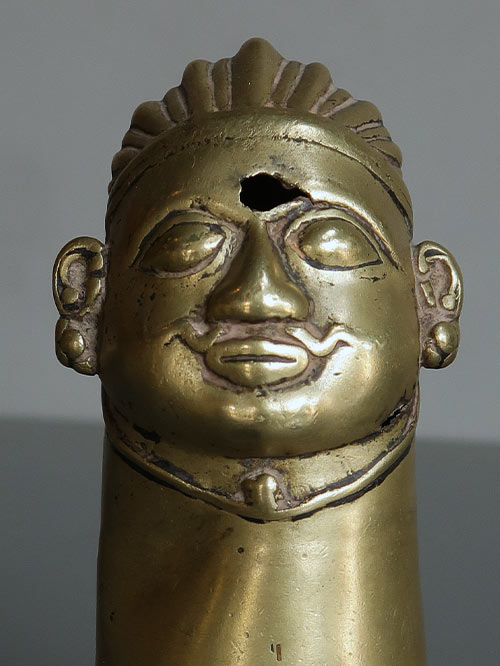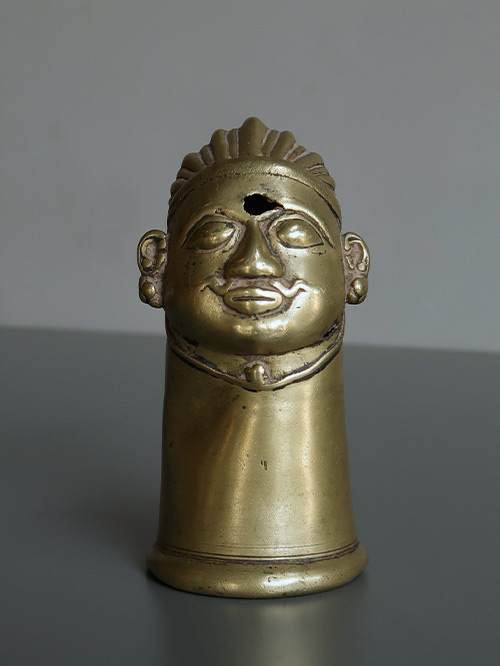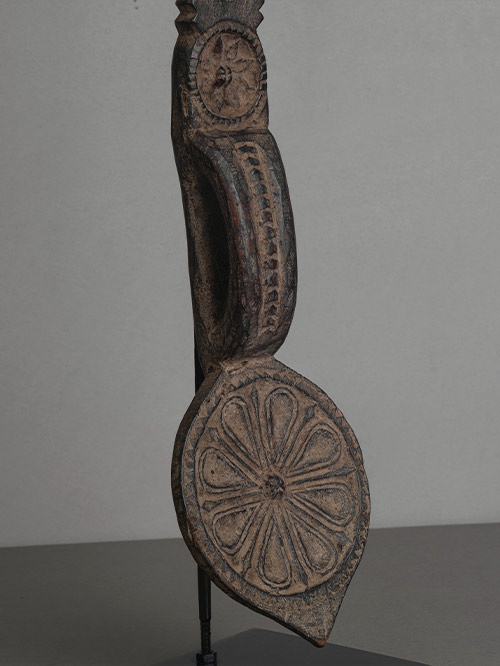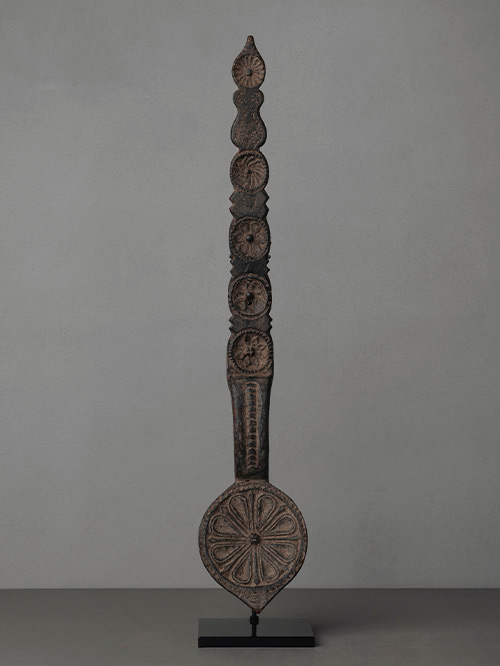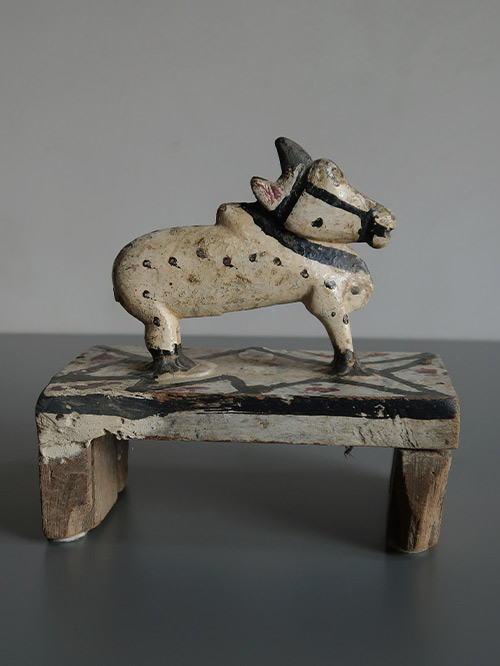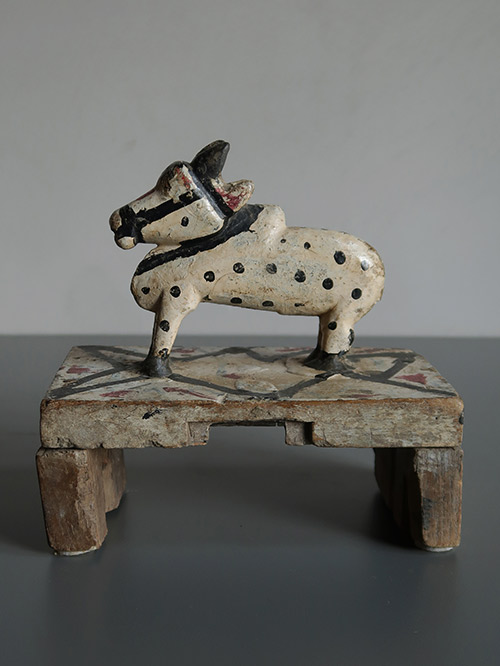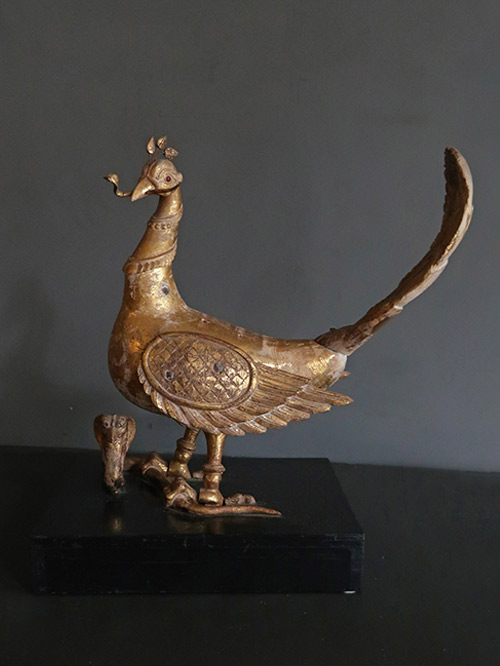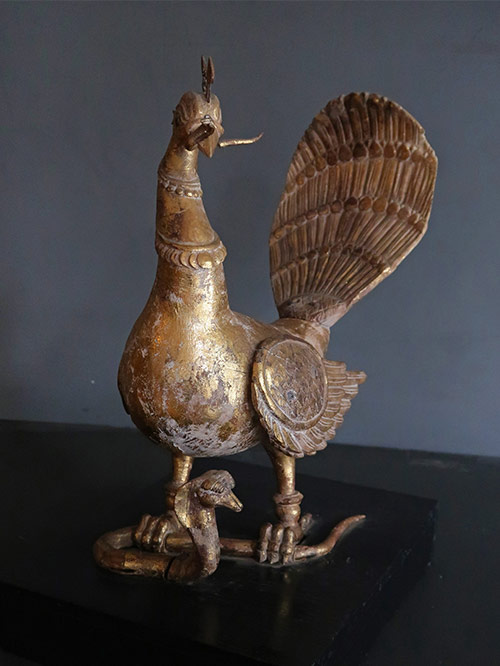Mysore
Sandalwood
A charming depiction of crawling Balakrishna, adorned only with jewelry. The chubby child has part of his hair tied in a topknot and uses his left hand, foot, and knee to support himself while crawling. He crawls upon a tiered plinth and geometric prabhavali frames the figure, forming a ritual throne around the deity.
This Balakrishna is a masterful example of South Indian carpenters’ gudigar art (sandalwood carving). The world ‘gudi’ stands for temple in Kannada and the ‘gudigar’ was an artisan or craftsman specifically trained and skilled in carving wooden lintels and columns, painting panels, sculpting and moulding earth to prepare idols, all traditional arts associated with Hindu temples. Mysore gudigars were considered the most experienced and skilled in the art of sandalwood carving.
Size (cms): 11(H) x 11(W) x 6(D)
Size (inches): 4.5(H) x 4.5(W) x 2.5(D)

